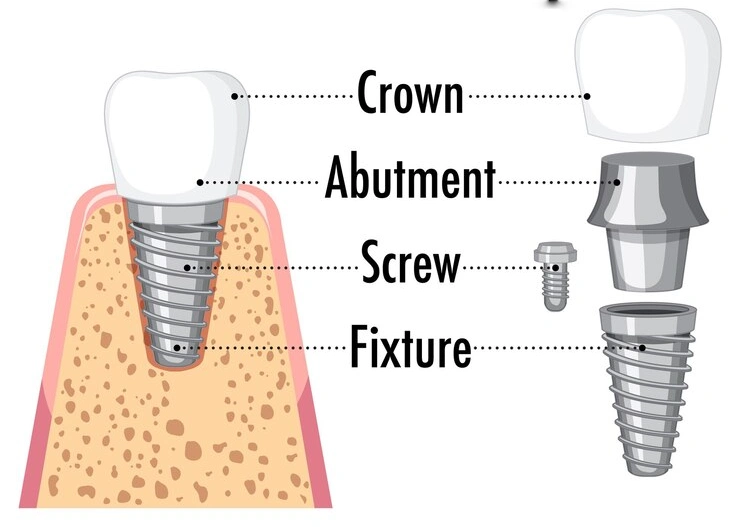Types & Procedures of Dental Implants

Types & Procedures of Dental Implants
In the realm of modern dentistry, dental implants stand as marvels of innovation, offering a revolutionary solution to restore smiles and functionality. From their inception to the intricate procedures involved, let's delve into the world of dental implants.
Overview:
Unlike traditional dentures or bridges, implants offer unparalleled stability and longevity, making them a preferred choice for countless individuals seeking a permanent solution for missing teeth.
Types:
The journey to obtaining Dental Implants typically involves several stages, each meticulously executed to ensure optimal results:
dental implants represent a remarkable advancement in dental technology, offering a lifelike solution for missing teeth that restores confidence and oral health. With various types tailored to individual needs and meticulous procedures ensuring optimal outcomes, the journey to a rejuvenated smile begins with the transformative power of dental implants.
Overview:
Unlike traditional dentures or bridges, implants offer unparalleled stability and longevity, making them a preferred choice for countless individuals seeking a permanent solution for missing teeth.
Types:
- Endosteal Implants: This type of implant is the most common and involves surgically placing the implant directly into the jawbone. Once the surrounding tissues heal, a second surgery is performed to connect a post to the implant, onto which the artificial tooth is then attached.
- Subperiosteal Implants: In cases where the jawbone isn't robust enough to support traditional implants, subperiosteal implants come to the rescue. Instead of being inserted into the bone, these implants are placed on top of it but beneath the gum tissue. This option is suitable for individuals with bone loss who are unable or unwilling to undergo bone augmentation procedures.
- Zygomatic Implants: Reserved for patients with severe bone loss in the upper jaw, zygomatic implants anchor into the cheekbone (zygoma) rather than the jawbone. This innovative approach eliminates the need for bone grafting and offers a viable solution for those previously deemed unsuitable for traditional implants.
The journey to obtaining Dental Implants typically involves several stages, each meticulously executed to ensure optimal results:
- Initial Consultation: The process begins with a thorough examination and discussion of the patient's dental and medical history. X-rays and 3D scans may be performed to assess bone density and determine the best course of action.
- Implant Placement: During this surgical phase, the implant is precisely positioned into the jawbone. Depending on the type of implant and individual circumstances, this procedure may be performed under local or general anesthesia for patient comfort.
- Osseointegration: Following implant placement, a period of healing ensues during which osseointegration occurs. This crucial process involves the implant fusing with the surrounding bone tissue, ensuring stability and durability.
- Abutment Placement: Once osseointegration is complete, a small connector called an abutment is attached to the implant. This component serves as the link between the implant and the prosthetic tooth or crown.
- Prosthetic Attachment: The final step involves customizing and attaching the artificial tooth or teeth to the abutments. Careful attention is paid to aesthetics and functionality to achieve a natural-looking and comfortable result.
dental implants represent a remarkable advancement in dental technology, offering a lifelike solution for missing teeth that restores confidence and oral health. With various types tailored to individual needs and meticulous procedures ensuring optimal outcomes, the journey to a rejuvenated smile begins with the transformative power of dental implants.
Recent Posts
Kinder Smiles
3 Pre-Root Canal Tips for Diabetics
Kinder Smiles



